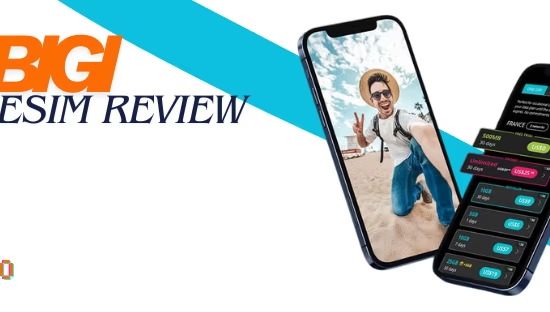
T-Mobile SIM Cards Decoded
A SIM card, or Subscriber Identity Module card, is a small, removable chip that allows devices to connect to a cellular network. T-Mobile, one of the major wireless carriers in the US, uses SIM cards to provide service to its customers. t mobile sim cards
T-Mobile operates on the GSM network technology, while other major carriers like Verizon use CDMA. GSM networks like T-Mobile’s require a SIM card to identify and authenticate devices on the network. The SIM card contains basic information about the subscriber, including the phone number, contacts, text messages, and service plan.
T-Mobile offers a range of plan options that utilize SIM cards. These include:
-
Prepaid plans, where customers pay upfront for a bucket of data and minutes. Prepaid SIM cards provide flexibility without contracts.
-
Postpaid plans, or contract plans, are where customers pay a monthly fee for a set amount of data, minutes, and texts. Postpaid plans typically require a 1 or 2-year contract.
-
Mobile Internet plans for tablets and hotspots. The SIM provides connectivity for these devices without having to pair them with a phone.
-
Wearable plans for smartwatches with cellular connectivity. A dedicated wearable SIM syncs the device to the wireless network.
So, in summary, T-Mobile SIM cards allow compatible devices to connect to T-Mobile’s GSM network and utilize the various service plans available. The SIM contains the customer’s account information to authenticate them on the network.
Compatible Devices t mobile sim cards
T-Mobile SIM cards work with a wide range of unlocked devices, including phones, tablets, and mobile hotspots. Some of the most popular unlocked phones compatible with T-Mobile SIM cards include:
- Apple iPhones
- Samsung Galaxy S and Note series
- Google Pixel phones
- OnePlus phones
- Motorola phones
For tablets, most WiFi-enabled tablets can work with T-Mobile SIM cards as long as there is a slot to insert the SIM card. Top options include:
- Apple iPad (WiFi + Cellular models)
- Samsung Galaxy Tab S series
- Amazon Fire tablets
- Microsoft Surface tablets
Mobile hotspots from brands like Netgear, TP-Link, and Huawei are also compatible with T-Mobile SIMs as long as the hotspot is unlocked. This allows you to create a portable WiFi hotspot using a T-Mobile cellular data connection.
The key is that the device must be unlocked and support the radio bands used by T-Mobile’s network. As long as the hardware is compatible, just insert a T-Mobile SIM card, and you can start using T-Mobile’s network for data and calling on an unlocked device.
SIM Sizes
T-Mobile uses 3 common SIM card sizes: standard, micro, and nano.
The Standard SIM is the oldest and largest SIM card, measuring 25mm x 15mm. Standard SIMs are still used in some older basic phones but have mostly been phased out in smartphones.
The Micro SIM is smaller than the Standard at 15mm x 12mm. Micro SIMs were commonly used in earlier smartphone models, like the iPhone 4.
The Nano SIM is the newest and smallest at 12.3mm x 8.8mm. Nano SIMs are the most widely used SIM cards for current smartphones and tablets.
When upgrading your T-Mobile phone, you may need to get a new SIM card if your old one doesn’t fit the SIM tray size. Make sure to get the correctly sized SIM; most modern T-Mobile smartphones use the Nano SIM.
Activation Process t mobile sim cards
Activating a new T-Mobile SIM card is a straightforward process that can be done online or in-store.
To activate online, you’ll need the SIM card number (ICCID). This can be found on the back of the SIM card packaging.
- Go to T-Mobile’s activation page.
- Select if you’re bringing your own device or purchasing a new one.
- If bringing your own device, choose either “activating a new line of service” or “switching your number to T-Mobile.”
- Enter the SIM card number and any other required information, like your name, address, etc.
- Follow the remaining steps to select a plan and payment method.
Once the activation is complete, insert the SIM card into your phone. Make sure cellular data is enabled, and you should now have service.
To activate in-store, bring your T-Mobile SIM card to any T-Mobile retail store. An employee can assist with the activation process and get you set up with service right away. They’ll need the SIM card number as well as basic personal info.
Both online and in-store activation typically only takes about 10–15 minutes to fully complete. Then you’ll be ready to start using your T-Mobile service.
Switching SIMs Between Devices
Switching your T-Mobile SIM between devices is a straightforward process. Here are the steps to safely remove your SIM and activate it on a new phone or tablet:
-
Turn off your old device and locate the SIM card slot. On most smartphones, this is on the side or bottom edge.
-
Use the provided SIM tool from your device box to gently push the SIM and slide it out. Be careful not to bend or scratch the metal contacts.
-
Now turn on your new device and find the SIM card slot. Carefully slide the SIM card in until it clicks into place.
-
Turn on the new phone and go through the activation steps. In most cases, it will automatically activate your existing T-Mobile service.
-
If you encounter any activation issues, you may need to manually select your T-Mobile network and APN settings. Contact T-Mobile customer support for help troubleshooting.
-
Once successfully activated, your phone number, plan, and account details will carry over to the new device. You may need to re-download any apps or contacts not stored in the cloud.
-
Make sure to turn off automatic backups or syncs to your old device. You don’t want data overwriting your new setup.
-
Finally, perform a factory reset on your old device to wipe the data before recycling or reselling it. This also removes your SIM activation, so the phone can’t be used without a new SIM.
That covers the basics of safely switching your T-Mobile SIM to a new device while carrying over your existing service. Contact customer support if you run into any activation problems during the transfer.
International Roaming t mobile sim cards
T-Mobile offers international roaming in over 210 countries and destinations. This allows you to use your T-Mobile SIM card while traveling abroad to make calls, send texts, and access data services.
When roaming internationally on T-Mobile, you’ll be connected to partner networks and subject to roaming charges. These are additional fees on top of your regular monthly bill for using the service while abroad.
T-Mobile publishes international roaming rates on its website for calls, texts, and data usage. Voice calls typically cost $0.25 per minute, texts cost $0.50 per message sent, and data costs $15 per megabyte used. These fees can add up quickly if you use a lot of services while traveling.
To avoid roaming charges, T-Mobile offers a few options:
-
Enable Data Roaming Cap – This will turn off data roaming when you hit a set usage limit, avoiding further charges. You can choose caps like $50 or $100.
-
Purchase an international roaming data pass – These provide a bucket of LTE data you can use abroad in certain countries or regions for a fixed daily or weekly fee. For example, a daily pass with unlimited high-speed data is $5 in most countries.
-
Use free 2G data speeds – T-Mobile allows you to roam internationally at slowed 2G data speeds at no extra cost. While slower than LTE, this allows basic services like email, simple web browsing, and mapping without roaming fees.
-
Rent/Buy local SIM card – Use a local SIM card in the country you are visiting to get affordable data rates and avoid T-Mobile roaming. Just swap it into your phone temporarily.
Checking T-Mobile’s roaming policies and rates for your destination before traveling can help you manage and minimize fees for using your T-Mobile SIM internationally. With some planning, you can roam abroad with your regular number without getting slammed by huge charges.
Multiple SIMs
T-Mobile supports having multiple SIM cards associated with a single account. This allows customers to switch between different SIMs on their compatible devices.
Reasons customers may want multiple SIMs include:
- Having separate SIMs for personal and business lines on a single device
- Switching SIMs when traveling internationally to avoid roaming charges
- Testing out new phones or network technologies with different SIMs
- Maintaining previous phone numbers or plan benefits when upgrading devices
To use multiple SIMs, customers simply need to activate each additional SIM through T-Mobile. This associate that SIM card with the account.
Then it’s easy to switch between the different SIMs on compatible devices. Power off the phone, swap the SIM card, and power back on. The device will connect to the T-Mobile network using the newly activated SIM.
It’s a convenient way for customers to access multiple phone numbers and plans while only carrying a single device. T-Mobile supports having up to 12 voice/data SIM cards associated with one postpaid account.
eSIM
Embedded SIM (eSIM) technology allows devices to connect to mobile networks without the need for a physical SIM card. Instead, the eSIM profile is directly embedded into the device by the manufacturer.
T-Mobile launched eSIM support in 2018 for select Apple iPhone models. Since then, eSIM support has expanded to more Apple devices, like the iPhone 14 series, Apple Watches, and newer iPad models. Android device support is still limited, though some flagship Samsung phones now offer eSIM.
With an eSIM, you can activate mobile service without having to insert a SIM card. eSIM profiles can be downloaded over-the-air directly to the device. T-Mobile customers can scan a QR code during activation to download the T-Mobile eSIM profile.
Multiple eSIM profiles from different carriers can be stored on a device for easy switching between networks. For example, you could have a T-Mobile eSIM profile and a local carrier eSIM when traveling internationally. Toggling between the two profiles allows you to keep your number while taking advantage of local service.
Since eSIM is embedded into the device’s hardware, it’s not removable or transferable like a physical nano SIM card. However, if you ever need to transfer your phone number to a new device, T-Mobile supports moving the eSIM profile to the new phone.
eSIM technology simplifies the activation process and enables new dual SIM use cases. As eSIM support expands to more devices, removable plastic SIM cards will likely be phased out over time. T-Mobile will continue adding eSIM capabilities across its network and devices.
Troubleshooting T-Mobile SIM Card Issues
If you experience issues with your T-Mobile SIM card, there are some common troubleshooting steps to try:
SIM Not Detected
- Remove and reinsert the SIM card to ensure it is seated properly in the SIM tray.
- Make sure you have inserted the SIM in the correct orientation, with the metal contacts facing down.
- Try the SIM card on another unlocked device to see if the issue is with the SIM or device.
- Contact T-Mobile support if it is still not detected after trying the above.
No Service
- Reset network settings on your device. This will wipe out any existing network configurations.
- Ensure your device is unlocked, either by T-Mobile or the previous carrier if switching. Locked devices can’t connect.
- Try a different SIM slot if your device has dual SIM capability.
- Move to a location with better signal coverage in case the issue is a weak signal.
- Check the account status and make sure that the service plan is active.
Unable to Activate SIM
- Activate online or through the T-Mobile app instead of on the device.
- Contact T-Mobile support for activation troubleshooting if online methods fail.
- Ensure the account is in good standing and that the device used is compatible with T-Mobile bands.
Slow Data Speeds
- Check if you’re in an area with known poor coverage.
- Disable LTE and try a 3G network if available.
- Try resetting network settings again if speeds remain slow.
- Contact T-Mobile support to check for tower maintenance or outages.
Unreliable Calling/Texting
- Check if you have sufficient signal bars at your location.
- Toggle Airplane Mode on/off to force the phone to receive a signal.
- Remove the SIM and reseat until it clicks into place.
- Test SIM in another device to isolate the issue.
Following the troubleshooting steps here can help identify and resolve the most common T-Mobile SIM issues. Contact customer support if problems persist.
The Future of SIM Cards
SIM cards have been the standard for connecting mobile devices to cellular networks for decades. However, new technologies are starting to emerge that may replace traditional SIM cards in the future.
One technology that has gained traction in recent years is the embedded SIM (eSIM). Unlike a traditional SIM card that you can remove and replace, an eSIM is permanently installed in a device. This allows you to switch between cellular networks and plans without having to physically swap out SIM cards. eSIMs have seen adoption in smartwatches and other wearables so far, but many industry experts predict they will become more prevalent in smartphones as well. The benefits of eSIMs include easier switching between carriers and the ability to have multiple plans across different networks accessed through the same device.
Another potential SIM replacement is iSIM or integrated SIM. Proposed by Apple, iSIM would take the embedded SIM concept a step further by integrating the SIM function directly into the device’s processor. This could eliminate the need for SIM cards completely in future devices. However, it remains to be seen if iSIM will gain broad adoption across the mobile industry.
Beyond eSIMs and iSIMs, some envision a future where devices will connect to cellular networks without any physical SIM identity module at all. Instead, authentication and provisioning of devices would happen virtually through software alone. While we likely won’t see the complete demise of physical SIM cards for some time, it’s clear the technology is evolving towards more integrated, virtualized solutions.
Regardless of which technologies ultimately replace it, the SIM card has enjoyed a long reign as an indispensable part of connecting mobile devices. But as connectivity technologies continue to advance, their days seem numbered. The next generation of cellular connectivity will likely bear little resemblance to the familiar plastic SIM card.















